Михаил Супотницкий - Микроорганизмы, токсины и эпидемии
- Название:Микроорганизмы, токсины и эпидемии
- Автор:
- Жанр:
- Издательство:Вузовская книга
- Год:2006
- Город:Москва
- ISBN:нет данных
- Рейтинг:
- Избранное:Добавить в избранное
-
Отзывы:
-
Ваша оценка:
Михаил Супотницкий - Микроорганизмы, токсины и эпидемии краткое содержание
Кроме того, в монографии, впервые для отечественной литературы, обстоятельно освещены эпидемиология биологического террористического акта и методология выявления такого преступления. Книга хорошо иллюстрирована, содержит приложения и рассчитана на широкий круг специалистов.
Микроорганизмы, токсины и эпидемии - читать онлайн бесплатно полную версию (весь текст целиком)
Интервал:
Закладка:
Nardelli B., Gouzales C., Schechter M. et al. CD4 +blood lymphocytes are rapidly killed in vitro by contact witch autologous human immunodeficiency virus-infected cells // Proc. Natl. Acad. Sci. USA. — 1995. — Vol. 92, № 16. — P. 7312–7316.
Neukirch B., Kremer G.J. Disseminierte extrapulmonale tuberculose bei idiopathischer CD4-limphozitopenie //DMW: Dtsch. med Wochenschr. — 1995.- Vol.120, № 1‑2.- P. 23–27.
Newport M., Huxley C., Huston S. et al. A mutation in the interferon-g-receptor gene and susceptibility to mycobacterial infection // N. Engl. J. Med. — 1996. — Vol. 335. — P. 1941–1949.
Niklasson Bo, Hornfeldt B., Lundmans B. Could Myocarditis, Insulin-Dependent Diabetes Mellitus, and Guillain-Barre Syndrome Be Caused by One or More Infectious Agents Carried by Rodents? // Emerging Infectious diseases. — 1998. — Vol. 34, № 2. — P. 187–194.
O'Brien T., Winkler C., Dean M. et al. HIV-1 infection in a man homozygous for CCR5 // Lancet. — 1997. — Vol. 349. — P. 1219.
Oravecz T., Pall M., Norcross M. et al. Chemokine inhibition of monocytotropic HIV-1 infection. Interference with a postbinding fusion step // J. Immunol. — 1996. — Vol.157, № 8. — P. 1329–1332.
Patz J., Epstein P., Burke T. et al. Global Climate Change and Emerging Infectious Diseases // JAMA. — 1996.- Vol. 275, № 3. — P. 217–223.
Peano G., Menardi G., Ponzetto A. et al. HLA-DR5 antigen. A genetic factor influencing the outcome of hepatitis C virus infection? // Arch. Intern. Med. — 1994. — Vol. 154, № 23. — P. 2733–2736.
Pepe J.C., Wachtel M.R., Wagar E. et al. Pathogenesis of defined invasion mutants of Yersinia enterocolitica in a BALB/c mouse model of infection // Infect. Immun. — 1995. — Vol. 63, № 15. — P. 4837–4848.
Petosa C., Collier P., Klimpel K.R. et al. Crystal structure of the anthrax toxin protective antigen // Nature. — 1997. — Vol. 385, № 6619. — P. 833–838.
Rani R., Fernandez-Vina M., Zaherer S. et al. Study of HLA class II alleles by PCR oligotyping in leprosy patients from North India // Tissue Antigens. — 1993. — Vol. 43. — P. 143–147.
Ramirer J.A., Srinath L., Ahkee S. et al. HIV-negative» in Kentucky: a case of idiopathic CD4 +limphopenia and criptococcal meningitis // South. Med. J.- 1994.- Vol.87, № 7. - P. 751–756.
Reevers W., Hardy J., Reisen W. et al. The potential effect of global warming on mosquito-borne arboviruses // J. Med. Entomol. — 1994. — Vol. 31, № 2. — P. 323–332.
Relman D.A. Detection and Identification of Previously Unrecognized Microbial Pathogens // Emerging Infectious Diseases. — 1998. - Vol.4, № 3. — P. 382–390.
Rice J. M. Helicobacter hepaticus, a Recently Bacterial Pathogen, Associated with Chronic Hepatitis and Hepatocellular Neoplasia in Laboratory Mice // Emerging Infectious Diseases. — 1995. - Vol.1, № 4. — P. 129–131.
Richmond C. Human legionnaires disease a case of mistaken identify // Med. Dig. Asia. — 1987. — Vol. 5, № 1. — P. 19–21.
Ricketts M., Cashman N., Stratton E. et al. Is Creutzfeldt-Jakob Disease Transmitted in Blood? // Emerging Infectious Diseases. — 1997. - Vol.3, № 2. — P. 155–162.
Ritter A, Blum G, Emody L, Kerenyi M, Bock A, Neuhierl B, et al.tRNA genes and pathogenicity islands: influence on virulence and metabolic properties of uropathogenic Escherichia coli // Mol. Microbiol. — 1995. — Vol. 17, № 1. — P. 109–121.
Rollin P., Coudrier D., Surean P. Hantavirus epidemic in Europe, 1993 // Lancet. — 1994. — Vol. 343, № 1. — P. 114–115.
Rosqvist R., Forsberg Е. Wolf-Watz H. Intracellular targetting of the Yersinia YopE cytotoxin in mammalian cells induces actin microfilament disruption // Infect Immun. — 1991. — Vol. 59, № 14. — P. 4562–4569.
Rosqvist R, Magnusson K, Wolf-Watz H. Target cell contact triggers expression and polarized transfer of Yersinia YopE cytotoxin into mammalian cells // EMBO J. — 1994. — Vol. 13, № 4. — P. 964–972.
Rosqvist R, Forsberg Е, Rimpilдinen M. et al. The cytotoxic protein YopE of Yersinia obstructs the primary host defense // Mol Microbiol. — 1990. — Vol. 4, № 2. — P. 657–667.
Roswitha L., Johannes L., Reinhard K. The virus in all of us // Proc. Natl. Acad. Sci. USA. — 1996. — Vol. 93, № 11. — P. 5177–5184.
Rupprecht C., Smith S., Fekadu M. et al. The Ascension of wildlife Rabies: A Case for Public Health Concern or Intervention // 1995 Emerging Infectious Diseases. — 1995. — Vol. 1 № 4. — P. 107–114.
Russell R. Survival of insects in the wheel bays of a Boeing 747B aircraft on flights between tropical and temperate airports // Bull WHO. — 1987. — Vol. 65, № 3. — P. 659–662.
Ryan C., Nickels M., Hargrett-Bean N. et al. Massive outbreak of antimicrobial-resistant salmonellosis traced to pasteurized milk // JAMA. — 1987. — Vol. 58, № 12. — P. 3269–3274.
Ryo F., Isimura N., Kushiyama Y. et al. Hepatitis B virus with X gene mutation is associated with the majority of serologically “slient» non-B, non-C chronic hepatitis // Microbiol. And Immunol. — Vol. 40, № 7. — P. 481–488.
Saint Girons, Barbour A.G. Antigenic variation in Borrelia // Res. Microbiol. — 1991. — Vol. 142, № 5. — P. 711–714.
Sancher R., Castillo P., Torronteras S. et al. Un nuevo caso de linfocitopenia T CD4 +idiopatica e infeccion oportunista sin infeccion por VIN // Med. Clin. — 1995. -Vol.104, № 5. —P.125–129.
Santos J. Nutrition, infection, and immunocompetence // Inf. Dis. Clin. North. Am. — 1994. — Vol. 8, № 1. — P. 243–267.
Samaranayake Y., Samaranayake L. Candida krusei: biology, epidemiology, pathogenicity and clinical manifestations of an emerging pathogen // J. Med. Microbiol.- 1994. - Vol.41, № 5.- P.295—.299.
Salmond G., Reeves PJ. Membrane traffic wardens and protein secretion in Gram-negative bacteria // Trends Biochem Sci. - 1993. — Vol.18, № 1. — P. 7–12.
Salyers AA, Whitt DD. Bacterial Pathogenesis: A Molecular Approac. - Washington D.C.: ASM Press., 1994.
Schlesinger L.S., Horwitz M.A. A role for natural antibody in the pathogenesis of leprosy // Infect. Immun. — 1994. — Vol. 62, № 1. — P. 280–289.
Schuchat A., Deaver K., Wenger J. et al. Role of foods in sporadic listeriosis. 1. Case-control study of dietary risk factors // JAMA. — 1992. — Vol. 267, № 12. — P. 2041–2050.
Shaffer N. et al. // VIII Intern. Conf. on AIDS. Amsterdam, 1992. Ref. ThC 1580.
Schiavo G., Montecucco C. The structure and mode of action of botulinum and tetanus toxins. // In: Rood J., McClane B., Songer J., Titball R. editors. The clostridia: molecular biology and pathogenesis. San Diego: Academic Press; 1997. - P. 295–322.
Schlievert P. Searching for superantigens // Immunol. Invest. - 1997. - Vol. 26, № 2. — P. 283–290.
Shou-Jiang G., Moore P., Phil M. Molecular Approaches to the Identificatious Agents // Emerging Infectious Diseases. — 1996. - Vol. 2, № 3. — Р. 159–166.
Siegrist D.W. The Threat of Biological Attack: Why Concern Now? // Emerging Infectious Diseases. — 1999. - Vol. 5, № 4. — Р. 567–570.
Song L., Hobaugh M., Shustak C. et al. Structure of staphylococcal alpha-hemolysin, a heptameric transmembrane pore // Science. — 1996. — Vol. 274, № 14.- P. 1859–1866.
Sorvillo F, Lieb L, Waterman S. Incidence of campylobacteriosis among patients with AIDS in Los Angeles County // J Acquir Immune. Defic. Syndr. Hum. Retrovirol. — 1991. — Vol. 4, № 3. — P. 598–602.
Schmitt C.K., Meysick K.C., O ”Brien A. Bacterial Toxins: Friends or Foes? // Emerging Infectious Diseases. — 1999. - Vol. 5, № 2. — Р. 224–234.
Singh N., Agrawal S., Rastogi A. Infectious diseases and immunity: Special reference to major histocompatability complex // Emerging Infectious Diseases. — 1997. - Vol. 3, № 1. — Р. 24–34.
Sixma T., Kalk K., van Zanten B. et al. Redefined structure of Escherichia coli heat-labile enterotoxin, a close relative of cholera toxin // J Mol Biol. — 1993. — Vol. 230, № 7. — P. 890–918.
Seifert H. S. Molecular mechanisms of antigenic variation in Neisseria gonorrhoeae // Mol. Cell Biol. Hum. Dis. — 1992. — Vol. 1,№ 1. — P. 1 — 22.
Shope R. Arbovirus-related encephalitis // Yale J. Biol. Med. Hyg. — 1980. — Vol. 53, № 3. — P. 489–506.
Smith H. The revival of interest in mechanisms of bacterial pathogenicity // Biol. Rev. — 1995. — Vol. 70, N 2. — P. 277–316.
Smith H. Bacterial subversion rather that suppression of immune defences // Bacterial and Viral Inhibition and Modulation of Host Defences, L., 1984.
Stern A., Meyer T.F. Common mechanism controlling phase and antigenic variation in pathogenic neisseriae // Mol. Microbiol. — 1987. — Vol. 1, № 1. — P. 5 — 12.
Stein P., Boodhoo A., Armstrong G. et al. The crystal structure of pertussis toxin // Structure. - 1994. Vol. 2, № 1. — P. 45–57.
Taubenberger J.K., Reid A.H., Krafft A.E. et al. Initial genetic characterization of the 1918 “Spainich» influenza virus // Science. — 1997. — Vol. 275, № 10. — P. 1797–1796.
Thalia N., Wu C., Hobbs J. et al. Characterization of vancomicin resistence in Enterococcus fecalis // Antimicrob. Agents and Chemother. — 1989. — Vol. 33, № 10. — P. 1121–1124.
Theiss P., Karpas A., Wise K. Antigenic topology of the P29 surface lipoprotein of Mycoplasma fermentans: differential display of epitopes results in high-frequency phase variation // Infect. Immun. — 1996. — Vol. 64, № 7. — P. 1800–1809.
Therre H. // Biofutur. — 1990.- № 89. — P. 16–18.
Therre H.// Biofutur. — 1990.- № 88. — P.21.
Temin H. Sex and recombination in retroviruses // Trends Genet. - 1991. — Vol. 7, № 1. — P. 71–74.
Tesh V., O'Brien A. The pathogenic mechanisms of Shiga toxin and the Shiga-like toxins // Mol. Microbiol. — 1991. — Vol. 5, № 10. — P. 1817–1822.
Torok T.J., Tauxe R.V., Wise R.P. et al. A large community outbreak of salmonellosis caused by intentional contamination of restaurant salad bare // JAMA. — 1997. — Vol. 278, № 5. — P. 389–395.
Travis J. Invader threatens Black, Azov Seas // Science. - 1993. — Vol. 262, № 12. — P. 1366–1367.
Tully J., Rose D., Baseman J. et al. Mycoplasma pneumoniae and Mycoplasma genitalium mixture in synovial fluid isolate // J. Clin. Microbiol. — 1995. — Vol. 33,№ 6. — P. 1851–1855.
Tucker J. Toxins: Area Weapons // Gene Watch. - 1985.-Vol.2, № 2. — P. 10–12.
Tucker J. Historical Trends Related to Bioterrorism: An Empirical Analysis // Emerging Infectious Diseases. — 1999. - Vol.5, № 4. — P. 526–529.
van Gijsegem F., Gough C., Zischek C. et al. The hrp gene locus of Pseudomonas solanacearum, which controls the production of type III secretion system, encodes eight proteins related to components of bacterial flagellar biogenesis complex/ // Mol Microbiol. — 1995. — Vol. 15, № 4. — P. 1095–114.
Walker D.H., Firth W.T., Ballard J.G. et al.Role of phospholipase-associated penetration: mechanism in cell injury by Rickettsia rickettsii // Infect. Immun. — 1983. — Vol. 40, № 4. — P. 840–842.
Waters A.P., Higgins D.G., McCutcham T. Plasmodium falciparum appears to have arisen as a result of lateral transfer between avian and human hosts // Proc. Natl. Acad. Sci. USA. — 1991. — Vol. 88, № 12. — P. 3140–3144.
Watts D., Burke D., Harrison B. et al. Effect of temperature on the vector efficiency of Aeges aegypti for dengue 2 virus // Am. J. Trop. Med. Hyg. — 1987. — Vol. 36, № 3. — P. 143–152.
Читать дальшеИнтервал:
Закладка:
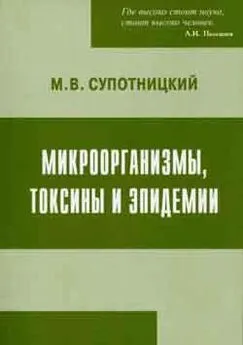
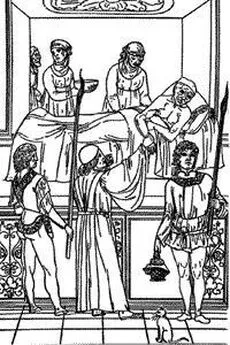
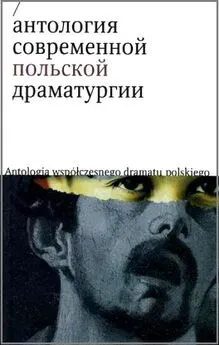
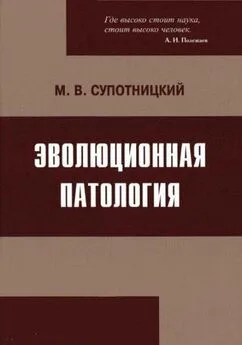
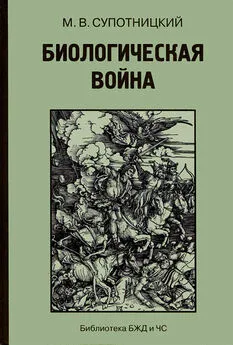
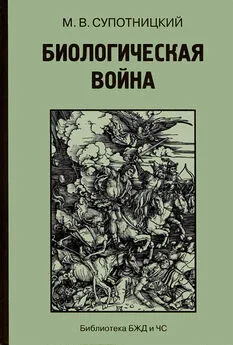
![Михаил Супотницкий - Очерки истории чумы. Книга II. Чума бактериологического периода [без иллюстраций]](/books/1084186/mihail-supotnickij-ocherki-istorii-chumy-kniga-ii.webp)
![Михаил Супотницкий - Очерки истории чумы. Книга I. Чума добактериологического периода [без иллюстраций]](/books/1084187/mihail-supotnickij-ocherki-istorii-chumy-kniga-i-ch.webp)


